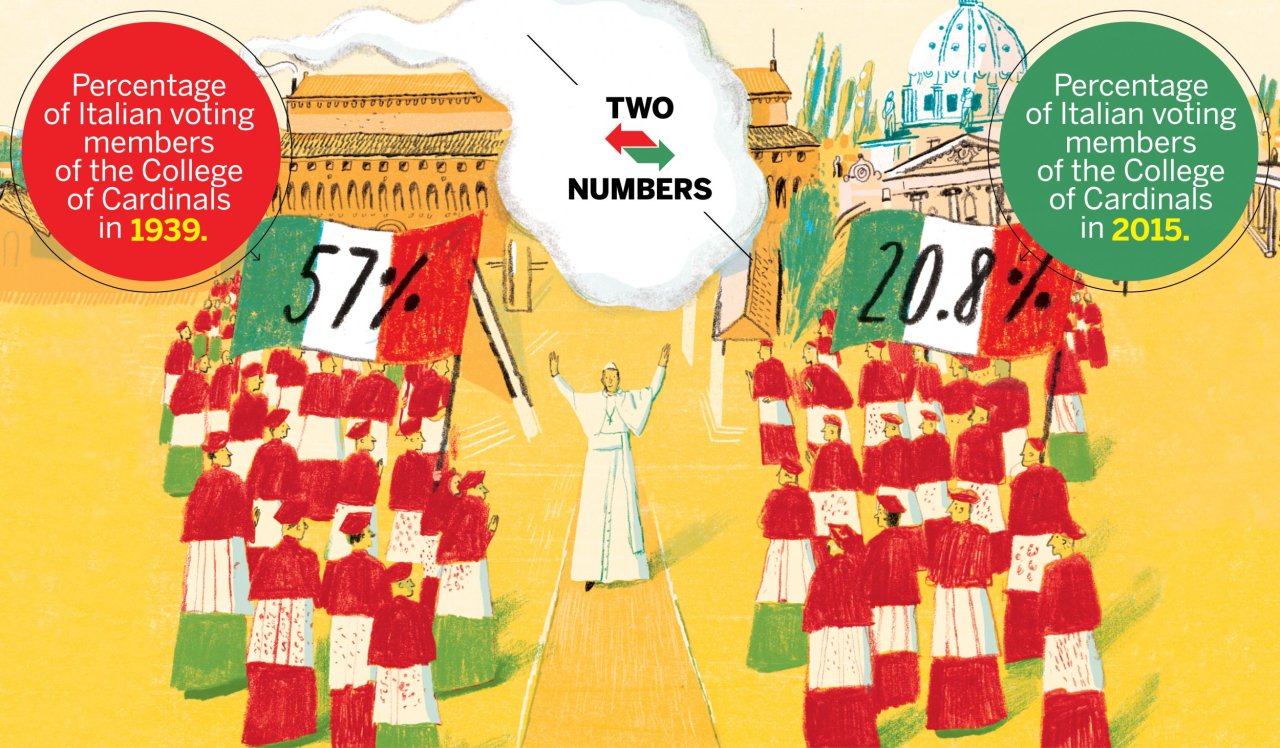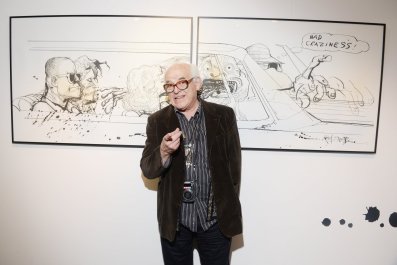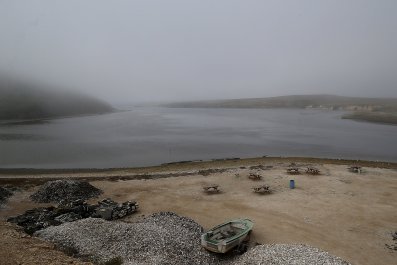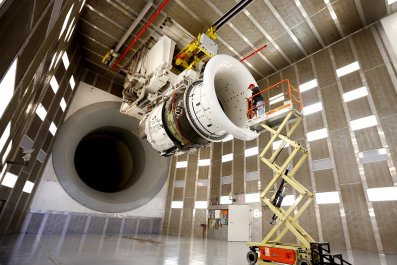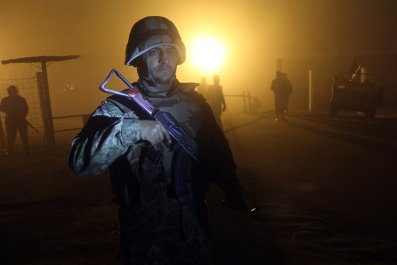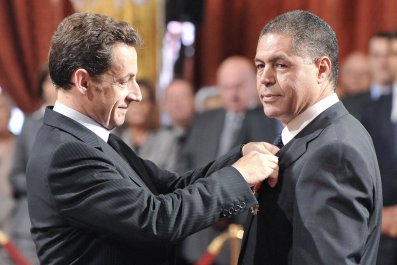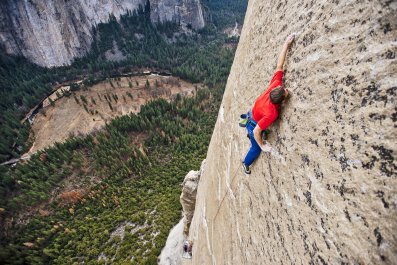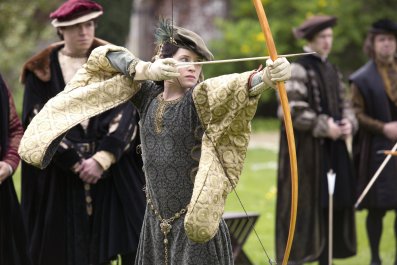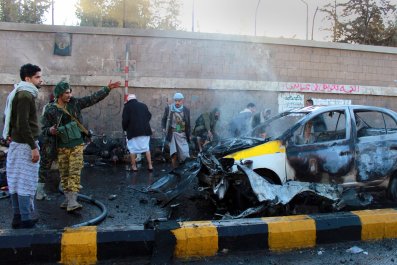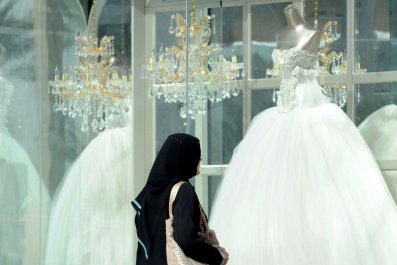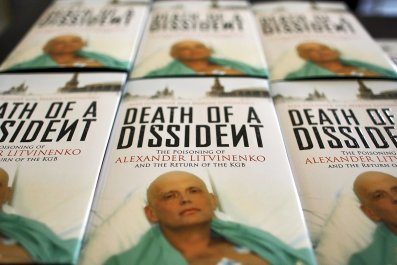When Pope Francis announced a new batch of cardinals this month, he struck a balance between the church's historic, Italian roots, and its future, which most likely lies in Latin America, Africa and Asia. To wit, Francis picked four Italians and twice that number from the developing world.
For most of its existence, the Roman Catholic Church has been a majority-Italian institution. Pope Leo XIII, the first pope of the 20th century, was born with a mouthful of a name, Gioacchino Vincenzo Raffaele Luigi. His successor, Pius X, was born Giuseppe Melchiorre Sarto; his successor, Benedict XV, was Giacomo Paolo Giovanni Battista della Chiesa. And so on and so on, until the College of Cardinals, the body charged with electing new popes, in 1978 chose a Pole, Karol Józef Wojtyła, who became John Paul II. He was the first non-Italian to hold the office since the 16th century—Pope Adrian V, a Dutchman.
The fact that the college has traditionally picked Italians to fill the Vatican's top slot is no surprise. For most of its history, the college has been filled with Giuseppes and Giacomos, not Josephs, Jacobs or Juans. But that is changing. After nearly two-and-a-half millennia of Italian control, the college has been slipping out of Italian hands, a reflection of the church itself.
At the culmination of Pope Pius XI's papacy in 1939, 57 percent of the college's electors—members younger than 80 who can vote in papal conclaves—were Italian. Most of the Curia, or papal court, was also Italian. Pius XII (1939-1958) brought that number down to 33 percent. John XXIII (1958-1963) raised it slightly, to 35 percent. Paul VI (1963-1978) lowered it again, to 24 percent. John Paul II (1978-2005) slashed it dramatically to 17 percent. Benedict XVI, the current pope's predecessor, brought it back up to around a quarter. After Pope Francis's latest picks are made official in February, the College of Cardinals will be 20.8 percent Italian.
Pope Francis seems eager for the church hierarchy to reflect the changing demographics of its members. According to the Pew Research Center, in 1910 65 percent of the world's Catholics called Europe home. In 2010, that number was 24 percent. In 1910, Italy was home to the second largest number of Catholics in the world, 12.1 percent of all Catholics, behind France. A century later, only 4.6 percent of the world's Catholics live in Italy, and Italy is only the fifth largest Catholic country, behind Brazil, Mexico, the Philippines, and the United States. This means that the College of Cardinals is still disproportionately Italian.
Among the new cardinals chosen by Francis are Orani João Tempesta of Brazil, which is home to more Catholics than any other country, Mario Aurelio Poli of Francis's native Argentina, Jean-Pierre Kutwa of Ivory Coast, Chibly Langlois of Haiti, and Orlando Beltran Quevedo of the Philippines. Also chosen was Philippe Nakellentuba Ouédraogo of Burkina Faso; sub-Saharan Africa saw its Catholic population explode from 1 percent of the world population in 1910 to 21 percent in 2010.



